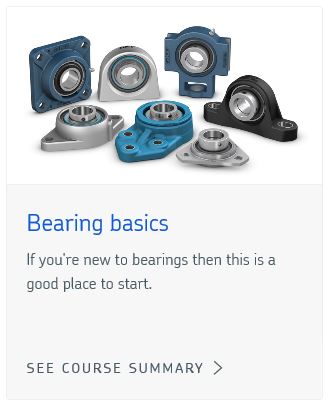OEM301 Bearing System Design
Course Overview The Bearing System Design course is an advanced training that develops further understanding of rolling element bearing, seal and lubrication technologies and theories used in the selection process for typical industrial applications, with the ultimate objective of improving the life, functionality, and operational reliability of rotating equipment.
Description
Bearing theory
- Purpose of bearings
- Rolling element bearing history
- Rolling element contact behaviour
Bearing components and functions
- Rolling elements, rings and cages
- Component materials
Selection of bearing type
- Advantages and disadvantages of various bearing types
- Bearing features and functionalities
Selection of bearing size
- Determining loads and duty cycles
- Bearing life determination using:
- Basic L10 method
- Adjusted life method
- Optimizing bearing life with the latest life methodologies
- Computer-based tools
Bearing dimensional tolerances
- Dimensional tolerance classes
- Internal clearances and preload classes
Friction and speeds
- Friction model within rolling element bearings
- Speed rating methodologies
Bearing system design
- Associated component design
- Locating and non-locating
- Shaft and housing fits
- Selection of internal clearance or preload
- Bearing material selection
- Mounting and dismounting considerations
- Sealing requirements
- Bearing types and integration
Lubrication
- Overview of bearing lubricants
- Selection of appropriate lubricant
- Lubricant life estimation
- Lubrication methods and applications
Machine system health
- Vibration
- Temperature
- Lubrication
Storage, shipping and handling
- Consequences
- Common failure modes
Who Should Attend
-
Design and application engineers directly responsible for machine design incorporating rolling element bearings
-
Users interested in optimising performance in existing machinery.
